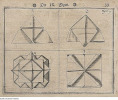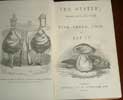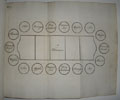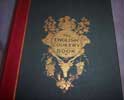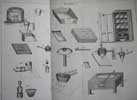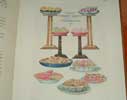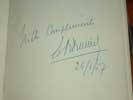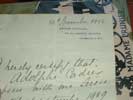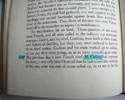THE NEW FAMILY RECEIPT-BOOK:
OR UNIVERSAL REPOSITORY OF DOMESTIC ECONOMY, INCLUDING A FUND OF USEFUL KNOWLEDGE AND EXPERIENCE IN ALL THE VARIOUS BRANCHES OF COOKERY, MEDICINE, CONFECTIONARY, PASTRY, BREWING, DISTILLING, PICKLING, PRESERVING, PER-FUMERY, DYEING, GILDING, PAINTING, VARNISHING, AGRICULTURE, FARRIERY, GARDENING, HUNTING, FISHING, FOWLING, &c. &c. &c. From scarce, curious, and valuable select Receipts and choice Memorandums, WITH SPECIFICATIONS OF THE PATENT MEDICINES, EXTRACTED FROM THE RECORDS OF THE PATENT OFFICE: ALL THE MOST SERVICEABLE PREPARATIONS FOR Domestic Purposes, AND NUMEROUS SUCCESSFUL IMPROVEMENTS IN THE ORNAMENTAL AND USEFUL ARTS, MANUFACTURES, &c. COLLECTED FROM PRIVATE SOURCES OF INFORMATION, AS WELL AS FROM FOREIGN BOOKS AND JOURNALS IN ALL THE LANGUAGES OF EUROPE: THE WHOLE FORMING AN EXTENSIVE LIBRARY OF VALUABLE DOMESTIC KNOWLEDGE AND GENERAL ECONOMY; Selected from the experience of Ages, combined with all the chief Modern Discoveries and Improvements of our own and other Coun-tries, in those useful and elegant Arts which not only contribute to the Happiness, the Convenience and the Comfort of Civilised and Social Life, but even to the Preservation of Life itself. (two straight lines) By D. HUGHSON, L.L.D. (two straight lines) LONDON: PRESENTED FOR W. PRITCHARD, 36, WARWICK-LANE, NEWGATE STREET; AND J. BYSH, 52 PATERNOSTER ROW. (one small straight line) 1817.
FIRST EDITION thus. 4to. 272 x 213 mm. 1fep. (1)Frontispiece, quite damp foxed. Title Page. [1] 2p Preface. (1)6 - 375. (1)377 - 384 Index. 1fep. Fully bound in dark brown leather with a nice patina. Spine with gilt lines and red leather label. Apart from the foxed frontis, overall in good condition.
- This is a fairly unusual book of cookery. With recipes for Fine French Bread, Prime Irish Usquebaugh (an alcoholic cordial), essence of American Spruce for making beer, "Spruce Beer from the process adopted by the famous Captain Cook", Best Brunswick Sausages, Manner of destroying caterpillars on Gooseberry Bushes in Scotland, "French Citizens' Soup', Sir John Hill's Specific for the Scurvy, To dress a turtle after the West India manner', diet drink for Ricketts, French Fricassee of Frogs, Turkish method of filtering water by Ascension, successful treatment of frozen limbs by the Russians, easy manner of always obtaining sufficient supplies of fresh water at sea, genuine Indian method of cooking a curry, art of manufacturing the fine red and yellow morocco leather as practised in Crim Tartary, genuine method of making Cheshire Cheese. One unusual article on page 151 and not usually found in English cookery books is about Ortolans. Mostly caught in Italy and France and also in large numbers in Cyprus. For lovers of game birds, Ortolans are the most prized. Also on page 293 there is unusually a recipe for Soy Sauce. Cagle quotes the BMC as regarding David Hughson L.L.D. as a pseudonym of David Pugh, author of early nineteenth century books about London. NUC states the Hughson is the pseudonym of Edward Pugh. Whomever D. Hughson was, this is a quite different and unusual book about food. There is an earlier, larger, undated and unattributed edition of 584 pages, with the smaller title; 'The Family Receipt Book' and 'Printed for the Editors'. There is an ink note on my own incomplete copy that it is a 3rd edition of 1817. This is also the same copy that Oxford p144 has, also stating it as a 3rd Edition of 1817. This throws up large doubts. For one book of 584 pages to be printed and published in 1817, then another attributed copy, abbreviated and extensively edited to a reduced 375 pages, with almost the same title page, appearing in the same year, doesn't make sense. Both copies also have completely different publishers. The earliest that the bigger copy was printed can really only be 1816, or earlier. Another mystery.!





click on image to enlarge

Antiquarian category
ref number:
11285 


